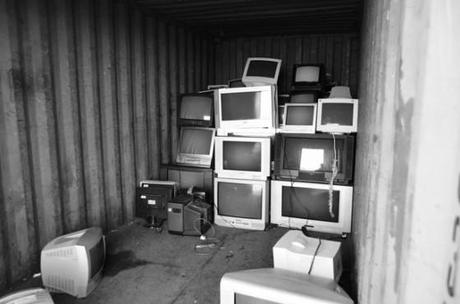As new broadcast technologies continue to emerge, recently Ericsson’s unified content delivery network (CDN) and other multiscreen platforms in 2013, consumers of programs traditionally screened on televisions have increasingly diverse options. The influx of the internet into consumers’ lives has been primarily responsible for this shift in consumption. Internet users can more actively make decisions regarding their media consumption by, for example reading Australian daily newspapers from their sofa in Detroit, or watching amateur vlogger compilations of the week’s biggest newsworthy stories from their smart phone during their morning commute. Media consumption on the television has, until recently, been a more passive endeavor, prompting viewers to plan their daily schedules around watching what interests them or, even more passively, flipping through the channels late at night seeking informative or frivolous entertainment.

On-Demand content available via cable television providers sought to meet the consumer desire to play a more active role in media consumption. However, these on-demand programs were first disadvantaged by their high price, on top of high monthly cable television bills, and by the adaptability of their internet-based competitors. User-uploaded content, like that available readily on Youtube, as practically anyone can attest to, is somehow exponentially more pleasurable than late-night channel flipping. Then, Hulu and Netflix offer viewers premium television or cinema content, available to watch at any time convenient for the viewers and from any internet-equipped device suitable to the viewer. This flexibility reaffirms the more active role media consumers feel during their use of internet technologies and incited the shift we are now seeing in television technologies.
Convergence of technologies
Televisions do, still, seem to have the advantage in terms of screen size and resolution. For this reason, some media consumers prefer to utilize their television’s USB port to watch their video files that they’ve obtained from the web on their enormous flat screens. While phones, stereos, and other devices have been sold internet-ready, with wi-fi adapters or equivalent blue-tooth technologies, for years, only in 2013 will almost all television sets be equipped with internet right out of the box. This development marks a significant, though seemingly inevitable, convergence of technologies.
Mobile TV has been available on smartphones and other mobile devices for several years now. As streaming technology has improved, including the new services Aero and the Hopper, all major television networks in the US have quickly developed their own apps for iPads or Androids to ensure that their media is available to consumers who desire this type of mobility.
Diversity of content available
With network television programming available alongside user uploaded content, the internet reigns supreme in terms of the diversity of content available. This factor will likely continue to play a large role in the shift in viewership from traditional television-based consumption of media to internet-based modes on mobile devices, computers, and even on internet-equipped television sets.
The future in usability
The future of how we will consume media – particularly television shows (but will we even continue to call them that, or settle on the more neutral ‘show’ if we cease to watch them on television sets?) – lies in the usability of the technology available. If internet-ready television sets prove to be usable for those few whose preferences for big flat-screen televisions remain, then televisions will adapt and still be important in some way. However, televisions will not survive without merging with internet technologies. That much is clear. If the Media Engagement Barometer is any indicator, home entertainment consumption is trending globally towards more diverse and mobile internet-based platforms.
Lisa Peteres is a freelance tech writer and blogger, currently representing clearhighspeedinternet.com. In her writing, Lisa focuses on high tech news, gadget reviews and future technologies. Email ThisBlogThis!Share to TwitterShare to Facebook

